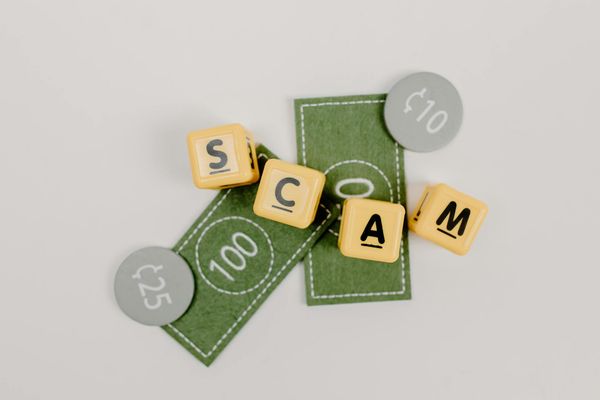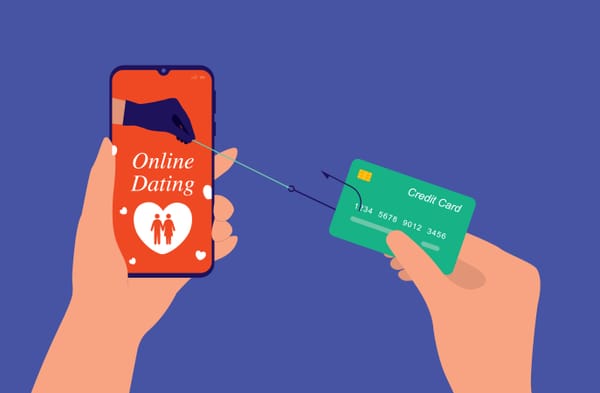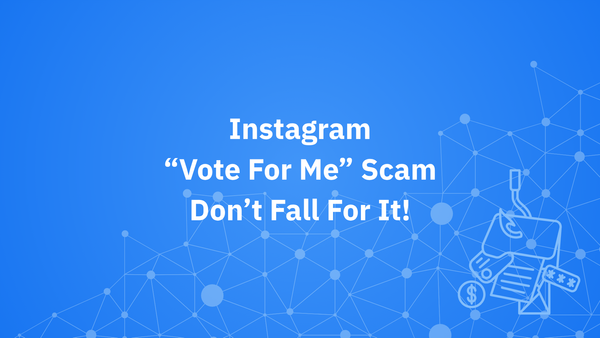10 eBay scams you need to know and how to avoid them

With its convenience and extensive reach, eBay has become a go-to platform for millions of buyers seeking great deals. However, its popularity also attracts criminals who constantly devise new ways to bypass eBay's buyer protection features, targeting unsuspecting buyers and tricking them into sending money.
Knowing scammers' tactics is the first step in staying safe when selling or buying on eBay or other online marketplaces.
Did you know?
- In 2023, 41% of all global scams were related to online purchases.
- The number of people who reported a financial loss due to online purchase scams in 2023 spiked to 82.6.
- In 2022, websites were reported as the primary point of contact for online shopping scams globally, with 37% of individuals who lost money to such scams citing websites. Social media was the second most common method scammers used to target e-commerce buyers, followed by emails.
How eBay scams work
Scams on online marketplaces often follow similar patterns:
1. Sellers create misleading listings with unrealistic prices or false information.
2. They may try to get buyers to pay for faulty items, send money outside the platform, or share personal data for identity theft.
3. Scammers often use urgent tactics to pressure buyers into ignoring warning signs.
Examples of Warning Signs for eBay Scams:
- Very short listing durations: For example, if a high-end laptop is listed for only 24 hours, it could be a red flag. While short listings can be legitimate for time-sensitive items like event tickets, it's unusual for most products and may indicate a scammer trying to make quick sales before being caught.
- Sellers with little or no feedback history: Be cautious of a seller account created last week with only two reviews, suddenly listing expensive electronics. New sellers can be legitimate, but when combined with other red flags, this could signal a scam account.
- Prices that seem unrealistically low: For instance, the latest iPhone model is listed at half the retail price. If a deal seems too good to be true, it often is. Scammers use attractive prices to lure in bargain hunters.
- Requests to communicate or pay outside the platform: If a seller asks you to email them directly or pay via a personal PayPal account, be careful. This bypasses the platform's protections and often violates its policies.
- Demands for non-refundable payment methods: If a seller insists on payment through cryptocurrency or wire transfer, be cautious. These methods are difficult to trace or reverse, leaving buyers vulnerable if the transaction goes wrong.
- Sellers with mostly cheap items suddenly listing expensive goods: A seller with a history of selling $5 keychains suddenly listing a $2000 designer handbag could be a tactic to build up positive feedback before attempting larger scams.
- Unusually long shipping times or high shipping costs: Be wary of a domestic item with an estimated delivery time of 6-8 weeks or a small item with $50 shipping. These could be attempts to delay the discovery of non-existent items or to inflate the total cost.
- Vague or copied item descriptions: If you come across a listing for a "high-quality smartphone" without specific details or a description clearly copied from another source, exercise caution. Legitimate sellers usually provide accurate, detailed information.
- Limited or poor-quality photos: Be cautious if a seller provides a single, blurry image of an expensive item or photos obviously taken from manufacturer websites. Genuine sellers typically provide clear, original photos of the actual item.
- Pressure tactics in the listing: Don't fall for phrases like "Act now!" or "Only one left!" combined with an unrealistic deal. While these can be used in legitimate marketing, they're also common in scam listings to rush buyers into hasty decisions.
These signs might have innocent explanations when present alone, but multiple red flags in a single listing should make you highly cautious. Always prioritize your financial safety over a seemingly great deal.
Related:
How to Spot Scammers on Craigslist. What You Need to Know to Stay Safe
Don't Get Scammed! Facebook Marketplace scams you should avoid
How to spot and protect against the most common Amazon-related scams
The 10 Latest eBay Buyer Scams
You can significantly reduce your risk of falling victim to online marketplace scams by knowing about scammers’ tactics.
1. Empty box and "photo only" scams
Some sellers may list popular or hard-to-find items, but they are actually only selling the box or a photo. This detail is often hidden in the description in small print. Another version of this scam involves listing expensive, high-demand items at a low price, with a note in the listing saying, "This is for a photo only" or "Actual item may appear different than photos." When your package arrives, you realize you only bought a photo of the item.
Related: How to Protect Yourself from Online Pet Scams
2. Shipping to the wrong address scam
This scam takes advantage of eBay's seller protection program, which requires a valid tracking number for each sale. Scammers may send empty packages to incorrect addresses in order to falsely claim that they have fulfilled the order. This allows them to provide a valid tracking number while keeping your money. When a buyer contacts the seller to report that they didn't receive the item, the seller can claim that the tracking information shows the item was delivered, avoiding having to refund the buyer's money.
Related: How to Tell the Difference Between a Holiday Scam and a Genuine Good Deal
3. Non-delivery of specific items
Some items, such as digital goods, real estate, or services, may not be covered by buyer protection policies, such as eBay's Money Back Guarantee. Scammers take advantage of this by selling these items and not delivering them. Before buying such items, make sure to check the protection policies and be extra careful when dealing with sellers in these categories.
Related: Ticketmaster Scams: Everything You Need to Know to Stay Safe
4. Wrong name scam
In this scam, fraudsters complete the sale normally, but when you receive the package, it has your correct mailing address but someone else's name. The scammers hope you'll think it was a mistake and return the package. If you do, eBay will see the transaction as returned or refused, which means you're no longer protected by eBay's Money Back Guarantee and can't dispute the sale.
5. Counterfeit goods
Scammers frequently sell counterfeit goods as authentic, using stolen photos and false descriptions. To build trust, they may sell cheap items initially and then list expensive counterfeits. Always check the seller's history and be cautious of high-value items at suspiciously low prices.
Related: How to Avoid Scams When Shopping for Bargains Online
6. Unexpected "free" items
Some scammers use stolen credit cards to buy items and then send unpurchased high-value items along with your order. When you contact the seller, they may claim that the extra item was sent by mistake and offer it to you as a "gift." However, the reality is that the seller used stolen credit card numbers to make the purchase, and you may end up being implicated in the fraud. If you experience this situation, report it immediately to avoid becoming involved in fraudulent activity.
Related: How to Avoid Publishers Clearing House Scams Like a Real Winner
7. Off-platform payments
Scammers may try to convince you to pay outside the official platform, claiming they can offer better deals or process your payment faster. However, this is almost always a scam to avoid buyer protection. Don't agree to use alternative payment methods or communicate outside the platform, as eBay's policies and security systems provide protection only if the transaction takes place directly on their platform. If a seller insists that you make a payment off the platform, especially through methods that are not reversible or traceable (such as wire transfers, gift cards, cryptocurrency, or Cash App, Venmo, and Zelle.), it's highly likely to be a scam.
8. Fake second-chance offers
Scammers may contact you after you've lost an auction, claiming to offer you another chance to buy the item. They might ask you to wire the purchase price to a non-eBay email address. Be cautious, as falling for this scam means you'll pay the scammer without receiving the item.
9. eBay Motors scams
Fraudsters often create a vehicle listing with a fabricated story, such as a family member's illness or military deployment, to evoke sympathy. They will request a wire transfer or non-reversible payment before claiming to ship the vehicle, which often doesn't exist. Look out for statements about paperwork and cars being stored in a non-existent eBay warehouse. Be cautious of sellers who refuse to meet in person, request additional fees for shipping or other expenses, or pressure you to close the deal hastily.
Related: Beware of This Vehicle History Scam When Selling Your Car
10. Fake eBay customer service
Scammers post fake support phone numbers and post them in various places. If you call these numbers for help with your purchase, the person on the other end might ask for private details or try to convince you to install programs on your computer.
Related: How To Spot and Avoid Tech Support Scams
How to protect yourself from eBay scammers
- Read the entire listing carefully, including the seller's policies and any platform guarantees.
- Be cautious when buying items not covered by the platform's protection policies.
- Keep all communication and transactions within the official marketplace system.
- Look into the seller's history and current offerings for any red flags.
- Be wary of clicking links or downloading attachments from unexpected messages.
- Never share sensitive personal information with sellers or supposed customer service representatives.
- Research item values to recognize unrealistic deals.
- Be cautious of short-duration listings, especially for high-value items at steep discounts.
- Monitor your package's progress and follow up promptly if there are issues.
- Only use the platform's approved payment methods.
- Verify any additional purchase offers through your official account on the platform.
If in doubt, use Scamio. If you suspect someone is trying to scam you or a website looks suspicious, check it with Scamio, our AI-powered scam detection tool. Send any texts, messages, links, QR codes, or images to Scamio, which will analyze them to determine if they are part of a scam. Scamio is free and available on Facebook Messenger, WhatsApp, and your web browser. You can also help others stay safe by sharing Scamio with them in France, Germany, Spain, Italy, Romania, Australia, and the UK.
FAQs
1. What Does eBay's Money Back Guarantee Cover?
eBay's Money Back Guarantee covers most transactions on eBay. It ensures that you get the item you ordered or your money back. If the item doesn't arrive, is faulty, damaged, or significantly different from the listing description, you can get a refund. Always ensure you follow eBay's policies and use their official communication channels for any issues.
2. How Can I Tell If a Seller Is Trustworthy?
Check the seller's feedback score and read reviews from previous buyers. A high rating and positive comments usually indicate a reliable seller. Also, look at the number of transactions they've completed. Sellers with a long history and consistent positive feedback are generally more trustworthy.
3. What Should I Do If I Receive a Phishing Email Claiming to Be from eBay?
Do not click on any links or provide any personal information. Verify the email by checking the sender's address and looking for signs of phishing, like poor grammar or urgent requests. Report the email to eBay by forwarding it to [email protected] and delete it from your inbox. Always log into eBay through their official website rather than through links in emails.
tags
Author
Cristina is a freelance writer and a mother of two living in Denmark. Her 15 years experience in communication includes developing content for tv, online, mobile apps, and a chatbot.
View all postsRight now Top posts
Fake Download of Mission: Impossible – The Final Reckoning Movie Deploys Lumma Stealer
May 23, 2025
Scammers Sell Access to Steam Accounts with All the Latest Games – It's a Trap!
May 16, 2025
How to Protect Your WhatsApp from Hackers and Scammers – 8 Key Settings and Best Practices
April 03, 2025
FOLLOW US ON SOCIAL MEDIA
You might also like
Bookmarks








